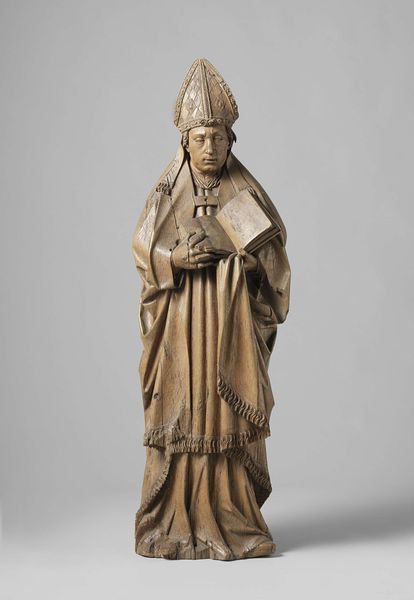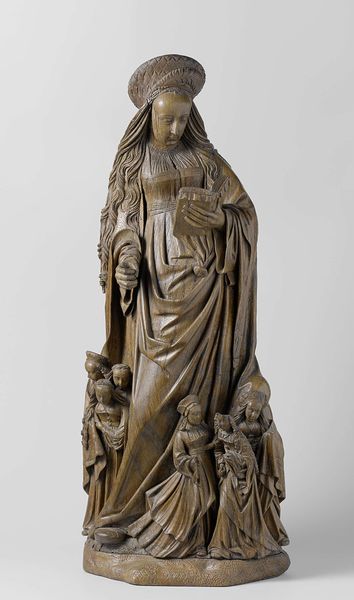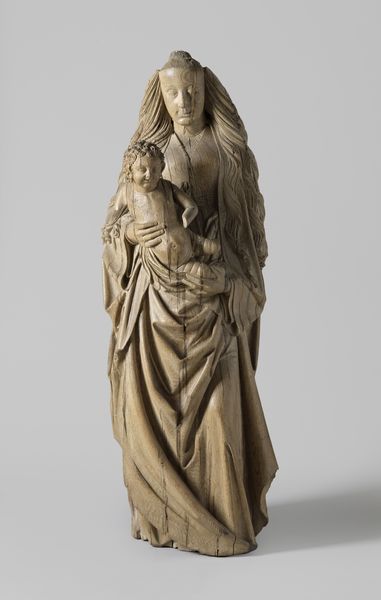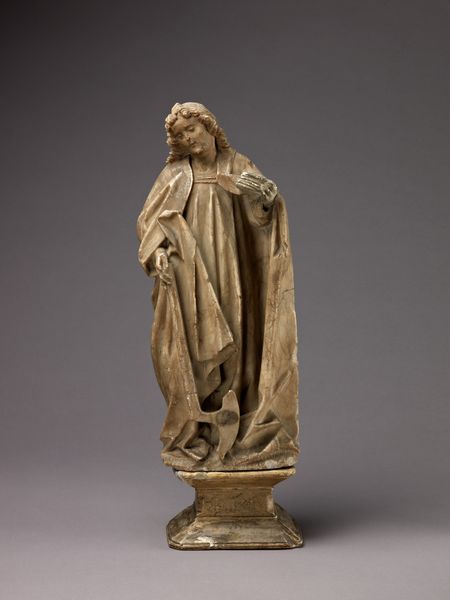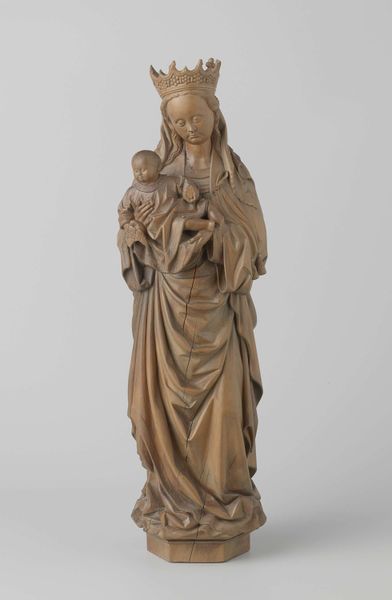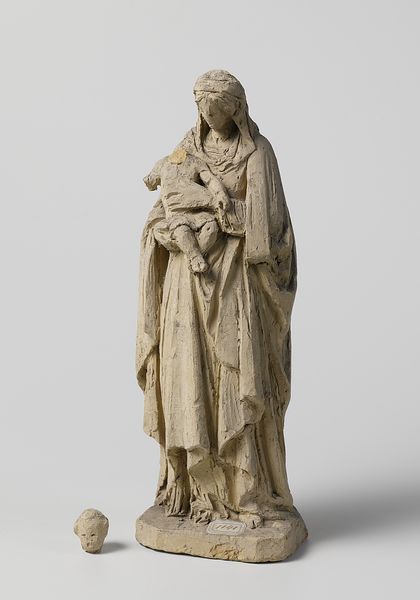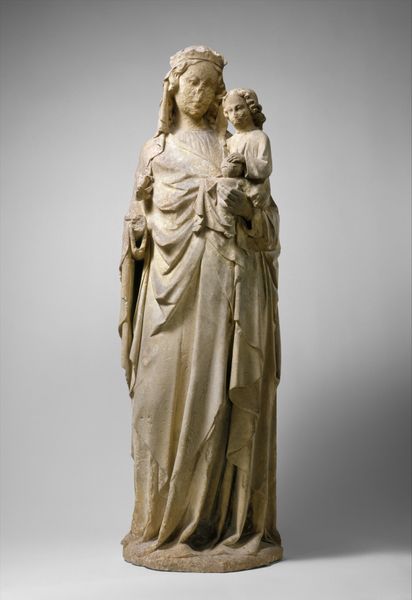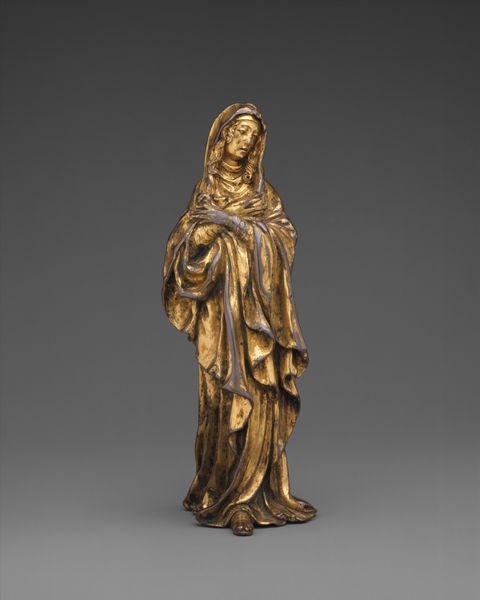
sculpture, wood
#
portrait
#
sculpture
#
figuration
#
11_renaissance
#
sculpture
#
wood
#
italian-renaissance
#
statue
Dimensions: height 100 cm, width 32 cm, depth 20 cm
Copyright: Rijks Museum: Open Domain
Curator: Right, let's talk about this striking sculpture, "The Virgin and Saint John the Evangelist," carved in wood, sometime between 1540 and 1545 by Arnt van Tricht. Editor: Immediately, I'm struck by the solemn stillness. The light catches those deeply carved folds in the drapery—it gives them an almost monumental quality, yet the unpainted wood feels so earthy and humble. Curator: Yes, that contrast is quite deliberate. Consider the positioning: the downcast gaze of the Virgin, the very deliberate arrangement of the fabric…there’s an emphasis here, wouldn’t you agree, on containment? The emotional restraint feels palpable. Editor: Absolutely. It's like all the emotional energy is directed inward. The very structure of the piece directs our gaze downwards, toward the base, rooting the figures in their sorrow. And yet, notice how the lines of the drapery create these wonderfully complex rhythmic patterns. The lines both bind and elevate her spirit at once. Curator: Indeed. Renaissance sculptors were particularly fascinated with classical contrapposto, weight shift. And yet, Arnt’s take is more…subdued. I almost feel it’s a Northern European response to Italian ideals: same skill, yet different emotional undercurrent. There’s an overwhelming sense of piety and respect embedded here. I like to imagine these two after the deposition, just breathing, supporting one another as their breath mists the quiet dawn. Editor: It’s amazing to observe, though, how such controlled forms can elicit such a powerful feeling. Look closely: the texture and detail is immense, but I keep being drawn back to the shapes in order to understand and be able to translate what the artist was seeing. What remains imprinted upon us now—it's fascinating to contemplate its ability to transmit complex emotive themes so efficiently! Curator: It truly does whisper secrets of devotion. What lingers for me is that rough-hewn texture—the almost defiant refusal of elaborate ornamentation. Editor: For me, the real magic lies in that intersection—where the artist transforms physical material into lasting emotions. A moment suspended and set in time!
Comments
rijksmuseum about 2 years ago
⋮
These two statues originally stood underneath a large sculpture of the crucified Christ. The Virgin bows her head in sorrow, while the expressive gaze of the young apostle John, Jesus’s favourite, is directed upwards to the right. Large sculpture groups such as this were normally placed high up on the screen that separated the chancel from the nave of the church.
Join the conversation
Join millions of artists and users on Artera today and experience the ultimate creative platform.
